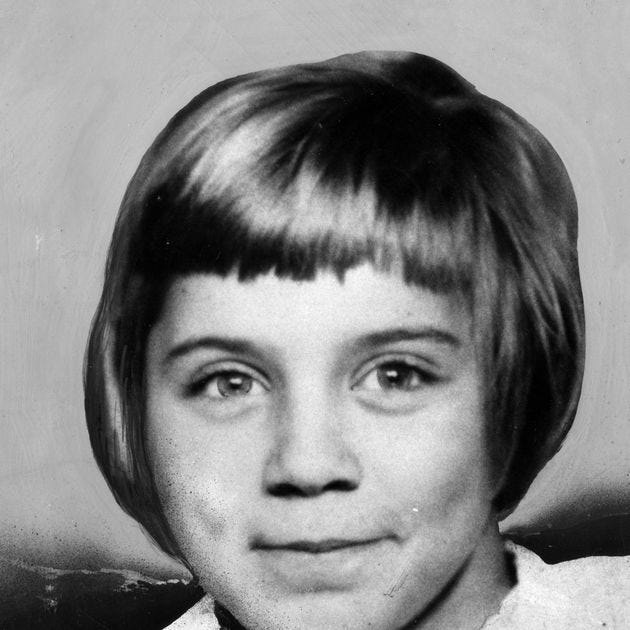Unsolved ’66: Illinois
Valerie Percy's killer murdered sixty-nine others, and it was covered up. (13th in a series)
Though it’s been more than half a century since the final murder chronicled in my book Zodiac Maniac occurred, not one of the forty-seven murders in it, all of which I credit to William Thoresen, has been solved: Not by DNA. Not by physical evidence. Not by a deathbed confession. Not by a witness coming forward. And not because a case was reactivated by cold-case investigators.
Yet, for all of the reasons above, cold cases—many of them decades old—are solved regularly.
It's not without reason that this group, so many cases, remain unsolved for so long. It’s not a coincidence, given the indications that William, dead since 1970, was responsible and that authorities knew it and covered it up. It appears as though their careers and reputations were more important than letting the kin of his victims know who murdered their parents, brothers, sisters, aunts, uncles, and cousins.
They may even have sent men they knew were innocent—like John Collins—to rot in prison in order to keep the secret.
Included in Zodiac Maniac is the case of ten-year-old Debbie Fijan, stabbed to death in DuPage County, Illinois, seven months before Valerie Percy was slain.
Fijan was last seen talking to a man in a white car. I revealed that William inherited a white Chevrolet Corvair in Chicago just prior to Fijan’s slaying.
But something about the case was odd: Though Fijan was murdered in prosperous times and was from a middle-class family who mourned her loss, she was buried in an unmarked grave. Though I could not explain this when writing the book, I now believe there’s an explanation.
The Zodiac Killer, whom evidence reveals was William, had an odd penchant for a killer: communication. He wrote to the media and phoned police.
The killer of college student Cheri Jo Bates, believed by many to have been Zodiac, wrote to her father and to police. The killer of Illinois high schoolers Mike Morrison and Debbie Means wrote to Means’s mother and phoned police.
Given the reasons to suspect that William murdered Fijan, it would not be surprising that after he murdered her, he contacted one of Fijan’s family members or the police and because of that contact, the family was advised (or chose) to keep her grave unmarked.
On a related note, I studied the case of Iowa college student Shelia Collins, who was murdered in January 1968. Like Debbie Fijan, Collins was last seen nearby her school. Her body was found between there and Chicago.
I realized that Chicago is a central point between all of these murders: Morrison and Means in southern Illinois; the seven victims in Ann Arbor and Ypsilanti, Michigan; Collins in Iowa; Fijan and Valerie Percy in Chicago’s west and north suburbs.
This was not surprising as William had an apartment in Chicago. Along with evidence that indicates he committed these murders, it suggests he used Chicago as a base when murdering in the Midwest, not unlike Zodiac, who is believed to have committed murders in San Diego, Riverside, and near Santa Barbara, California.
I learned from reading his wife’s book that William spent a considerable amount of time in Los Angeles starting in 1962, the year of the earliest presumed Zodiac murder, in Southern California. I had suspected he used Los Angeles as his base when murdering in the region.
I knew that Debbie Fijan’s killer trolled for her at her school. The same is true of Cheri Jo Bates and Jane Mixer, one of the seven Michigan victims, and Shiela Collins, the college student murdered in Iowa.
Both Mixer and Collins were murdered by a killer who called them after obtaining their information from ride-sharing boards at their schools.
Experts who have studied the Michigan cases have been at a loss to explain Collins’s murder because it is all but certain she was murdered by the same person who murdered Mixer. To call William the killer fits the facts of both cases.
Meanwhile, I found a connection between the murders of one of the Michigan victims, Alice Kalom, and of Mike Morrison and Debbie Means, the high schoolers who were murdered in Zodiac-like fashion in Southern Illinois.
Kalom was murdered on June 8, 1969, barely a month after Morrison and Means, in a remote area, on property owned by a sand and gravel company.
Morrison and Means were slain in a remote area, on property owned by a mining company. All were believed to have been taken to these locations by their killer.
William’s wife documented that he did not work for a living and spent a great deal of time away from home. Those circumstances would explain a killer who covered so much ground while in the process of killing many people.
This did nothing to make me think that the indications of a cover-up—fake Zodiac mailings that were deemed genuine, the planting of an implausible story, secrecy surrounding the Percy case and its files, the fired attorney in Florida, and perhaps even the jailing of John Collins—weren’t all parts of the same sham directed by the feds.
Interestingly, police believed Jane Mixer was was murdered by the same killer as the rest of the Michigan victims. Yet decades later, authorities announced an arrest in her case, a man who was not John Collins.
The man arrested seemed as unlikely a killer as Collins, nor does he explain who killed Shiela Collins, whereas William does.
There’s more to this. The story continues here and please subscribe:



